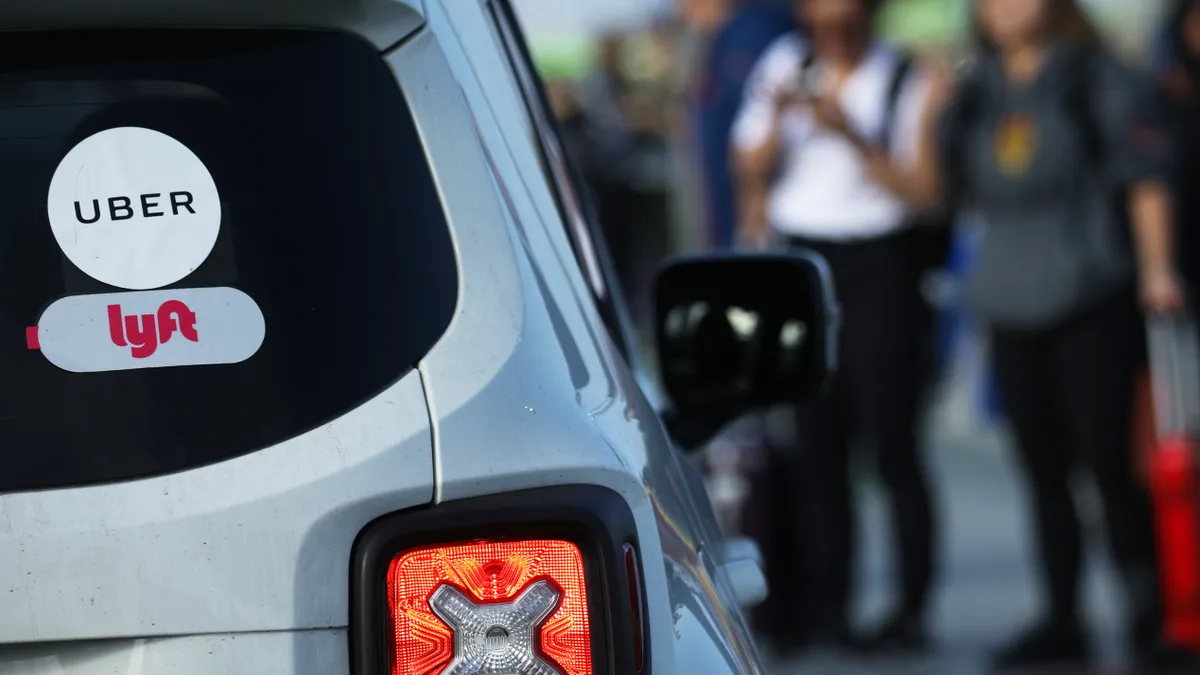Dive Brief:
- Ride-sharing companies Uber and Lyft both reported ridership increases in their 2023 first-quarter earnings reports this week. Uber claimed a 13% year-over-year increase in monthly active platform consumers — the number of people booking rides or meal deliveries through its app — and Lyft reported a nearly 10% increase in active riders. Uber said its trips grew to 2.1 billion globally, a 24% YoY increase.
- Uber quarterly revenues grew 29% year over year, to $8.8 billion for the quarter, while Lyft’s revenues increased 14% year over year, to $1.0 billion.
- “After lagging other regions in the recovery through 2021 and 2022, the rideshare category in the US & Canada is now growing faster in 2023,” Uber CEO Dara Khosrowshahi said in prepared remarks at its quarterly meeting. He added that Uber’s trips in the U.S. and Canada grew 40% YoY in Q1, in part due to lower fares.
Dive Insight:
While the COVID-19 pandemic crushed demand for ride-hailing services in the U.S., Uber’s food-delivery service, Uber Eats, allowed the company to bring in revenue as people stayed home. Lyft, however, was caught flat-footed, as ride-hailing services made up the bulk of the company’s business.
“No one was opening their Lyft app, so when the world reopened, it just seem easier to get an Uber,” Tom White, an analyst for D.A. Davidson, told the Associated Press earlier this week.
Lyft’s new CEO, David Risher, took the helm on April 17. Risher, a former Amazon executive, immediately began implementing a turnaround strategy, laying off nearly 1,100 employees to save the company money.
“Our Q1 performance was better than we anticipated as rideshare ride growth accelerated year-over-year for the first time in nearly two years,” said Elaine Paul, Lyft chief financial officer, in a statement. “We’ve moved decisively to cut our operating costs and will use the savings to pay for continued service level improvements near-term.”
During an interview with the Associated Press, Risher said Lyft would compete with Uber on price in an attempt to win back business and steady its finances. The move could also allow the company to pay its drivers more, potentially increasing its number of drivers and allowing Lyft to serve more riders and reduce wait times.
“It’s very important to our customers that when they open both (the Uber and Lyft) apps that they are not surprised by the prices being super different,” Risher said. “We want to be in line with where Uber is.”











